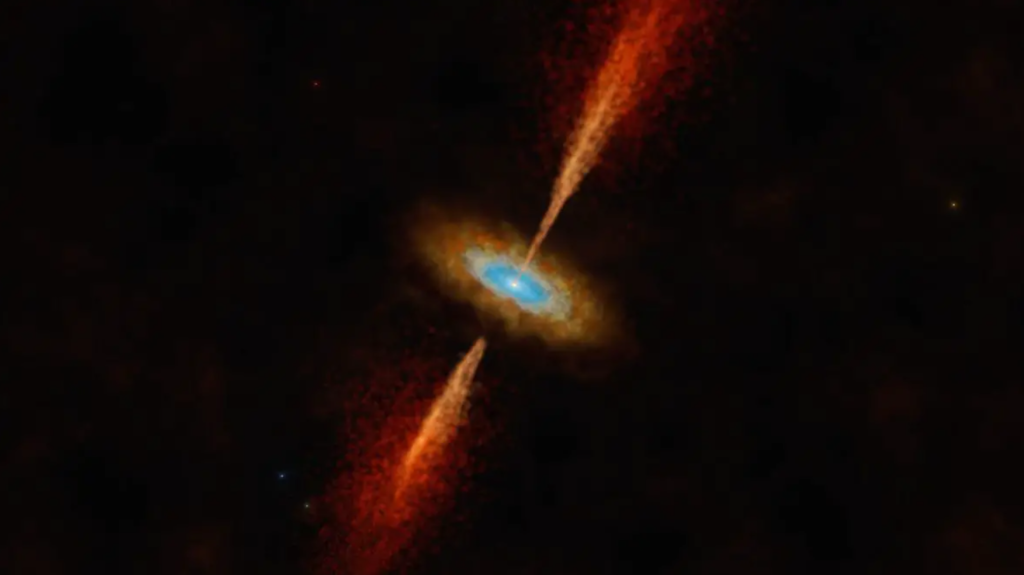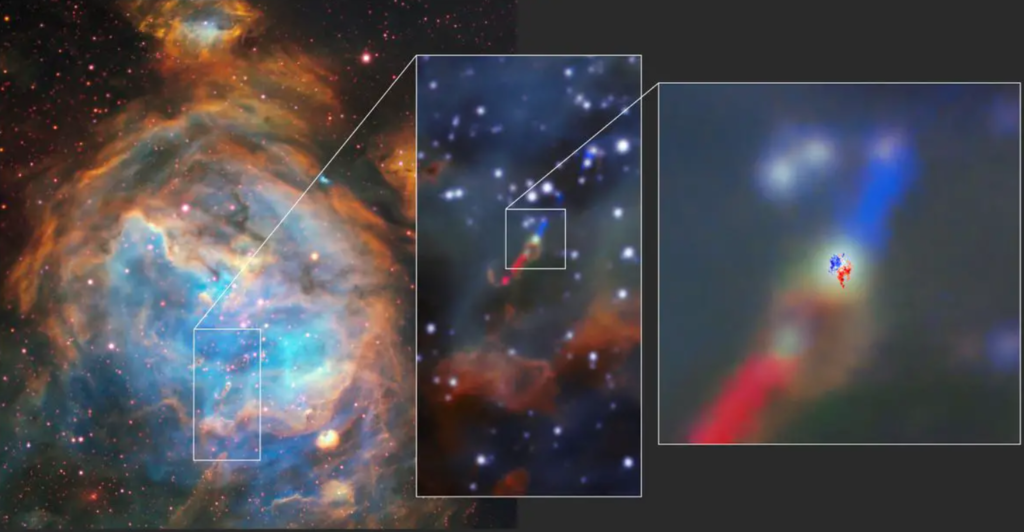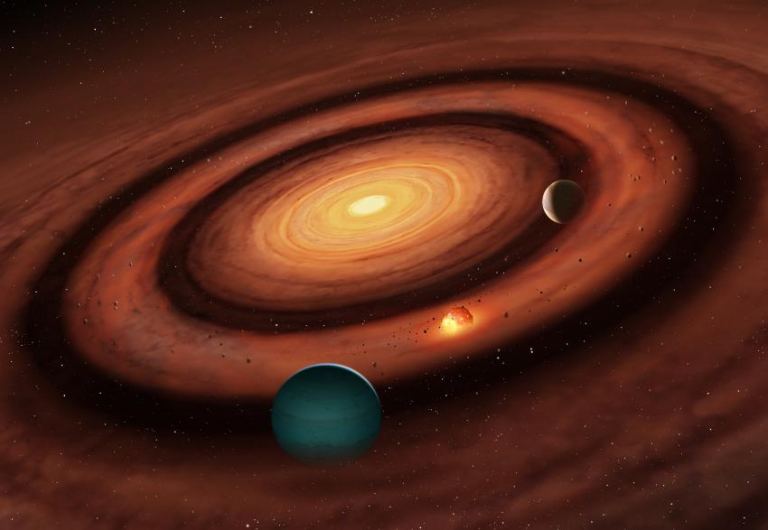Astronomers Achieve a Significant Milestone: First-Ever Detection of a Planet-Forming Disk Beyond the Milky Way
Astronomers have marked a momentous achievement in space exploration by identifying, for the first time, a planetary disk forming around a young star situated in a galaxy beyond our Milky Way. This groundbreaking discovery, located in the Large Magellanic Cloud, a neighboring galaxy positioned 160,000 light-years away, provides new insights into the universal processes governing the formation of stars and planets, resembling those within our own galaxy.
Named HH 1177, this system is situated within an extensive gas cloud in the Large Magellanic Cloud. The Atacama Large Millimeter/submillimeter Array (ALMA), Earth’s largest astronomical project consisting of 66 antennas in Northern Chile, played a pivotal role in this breakthrough. Leveraging ALMA’s capabilities as a singular radio telescope enabled the unprecedented observation of celestial phenomena.

Anna McLeod, a researcher from Durham University and the lead author, expressed her enthusiasm upon uncovering indications of a rotating structure in the ALMA data, marking the identification of the first extragalactic accretion disk. This discovery holds significant importance as it offers direct proof of the processes essential for the formation of stars and planets in a galaxy beyond our own.
The initial hints of this system’s existence were provided by observations from the Multi Unit Spectroscopic Explorer (MUSE) on the European Southern Observatory’s Very Large Telescope (VLT). MUSE detected a jet emerging from a nascent star, suggesting an ongoing disk accretion. To validate the presence of an accretion disk in HH 1177, the scientists scrutinized the movement of dense gas surrounding the star.

Accretion disks emerge as matter descends toward a central entity, like a young star, black hole, or neutron star, retaining angular momentum. This momentum hinders direct access to the central body, resulting in the development of a flattened, rotating disk. An identifiable characteristic of an accretion disk is the variation in gas velocity within it, with faster movement closer to the central object and slower movement toward the periphery.
The comparatively low dust content in the environment of the Large Magellanic Cloud facilitated the identification of the accretion disk encircling HH 1177. This circumstance allowed astronomers to observe the central star, presenting an opportunity to potentially witness the early phases of planet formation. This phenomenon parallels what our solar system likely underwent around 4.5 billion years ago, characterized by a protoplanetary disk surrounding the youthful sun.

The identification of this disk involved in planet formation within the Large Magellanic Cloud represents a new era in astronomy, facilitating the examination of star development in diverse galactic settings. It introduces opportunities to investigate the processes involved in the formation and evolution of planetary systems across various galactic environments.
Published in the journal Nature, this study denotes a significant advancement in our comprehension of the cosmos. It underscores the progress in astronomical technologies and stresses the significance of studying star formation outside our Milky Way. Beyond enhancing our understanding of planetary system formation, this discovery underscores the widespread occurrence of such processes in different galaxies.
As we venture further into the cosmos, discoveries like this underscore the vast and intricate nature of the universe, unveiling consistent processes and phenomena across galaxies. The HH 1177 system in the Large Magellanic Cloud serves as evidence of our continuously expanding knowledge regarding the origins and development of planetary systems in the broader universe.
Reference(s): Research Paper
Do not forget to share your opinion with us to provide you with the best posts !




0 Comments